
- Index
- Character
- Features
- 1st Edition (11)
- Astrology (9)
- Black Light (303)
- Black Light Poster (3)
- Blacklight (2540)
- Blacklight Reactive (4)
- Blacklight, Flocked (13)
- Blacklight, Numbered (13)
- Blacklight, Unframed (5)
- Flocked (3)
- Framed (3)
- Glow In The Dark (3)
- Hand-numbered (3)
- Limited Edition (7)
- Numbered (18)
- Signed (11)
- Stamped (3)
- Unframed (14)
- Velvet (5)
- Velvet, Blacklight (3)
- ... (2307)
- Item Height
- Size
- Subject
- Type
M. C. Escher Spheres Silk Screen Blacklight 19x31 J. Casey Poster 1968 VTG
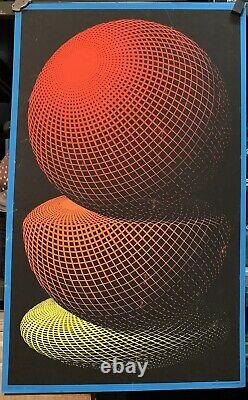
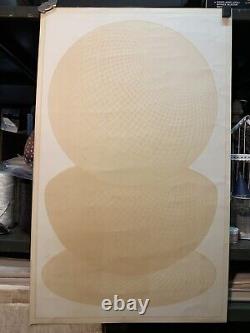
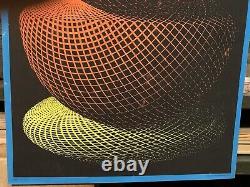

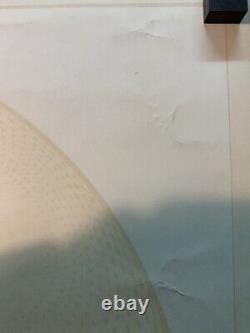

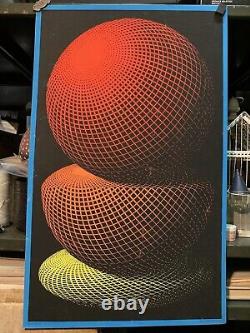

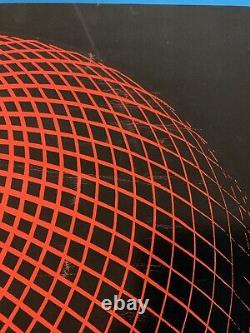
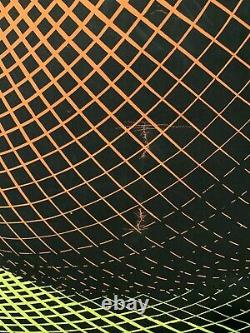
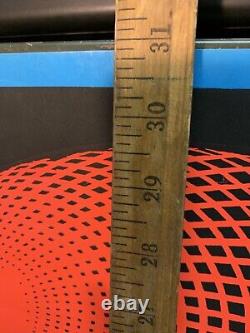
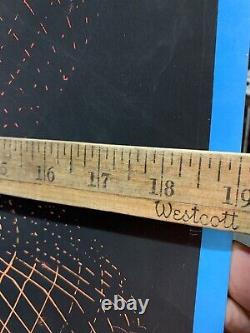


Escher Spheres Silk Screened Blacklight 19"x31" J. SILK SCREENED 19" X 31" BLACKLIGHT POSTER.
Silk Screened after engraving of M. #MCEscher #Escher #Spheres #SilkScreen #Blacklight #JCasey #Poster #1968. Maurits Cornelis Escher Dutch pronunciation:'m? R; 17 June 1898 - 27 March 1972 was a Dutch graphic artist who made mathematically inspired woodcuts, lithographs, and mezzotints.
Despite wide popular interest, Escher was for most of his life neglected in the art world, even in his native Netherlands. He was 70 before a retrospective exhibition was held. In the late twentieth century, he became more widely appreciated, and in the twenty-first century he has been celebrated in exhibitions around the world. Born Maurits Cornelis Escher, 17 June 1898, Leeuwarden, Netherlands. Died 27 March 1972 (aged 73), Hilversum, Netherlands. Education Technical College of Delft.Haarlem School of Architecture and Decorative Arts. Hand with Reflecting Sphere (1935). Parent(s) George Arnold Escher (father).
Awards: Knight (1955) and Officer (1967) of the Order of Orange-Nassau. His work features mathematical objects and operations including impossible objects, explorations of infinity, reflection, symmetry, perspective, truncated and stellated polyhedra, hyperbolic geometry, and tessellations. Although Escher believed he had no mathematical ability, he interacted with the mathematicians George Pólya, Roger Penrose, Harold Coxeter and crystallographer Friedrich Haag, and conducted his own research into tessellation.Early in his career, he drew inspiration from nature, making studies of insects, landscapes, and plants such as lichens, all of which he used as details in his artworks. He traveled in Italy and Spain, sketching buildings, townscapes, architecture and the tilings of the Alhambra and the Mezquita of Cordoba, and became steadily more interested in their mathematical structure. Escher's art became well known among scientists and mathematicians, and in popular culture, especially after it was featured by Martin Gardner in his April 1966 Mathematical Games column in Scientific American. Apart from being used in a variety of technical papers, his work has appeared on the covers of many books and albums. He was one of the major inspirations of Douglas Hofstadter's Pulitzer Prize-winning 1979 book Gödel, Escher, Bach.
This item is in the category "Art\Art Posters". The seller is "unkyan" and is located in this country: US. This item can be shipped to United States, Canada, United Kingdom, Denmark, Romania, Slovakia, Bulgaria, Czech Republic, Finland, Hungary, Latvia, Lithuania, Malta, Estonia, Australia, Greece, Portugal, Cyprus, Slovenia, Japan, China, Sweden, Korea, South, Indonesia, Taiwan, South Africa, Thailand, Belgium, France, Hong Kong, Ireland, Netherlands, Poland, Spain, Italy, Germany, Austria, Bahamas, Israel, Mexico, New Zealand, Philippines, Singapore, Switzerland, Norway, Saudi Arabia, United Arab Emirates, Qatar, Kuwait, Bahrain, Croatia, Republic of, Malaysia, Chile, Colombia, Costa Rica, Dominican Republic, Panama, Trinidad and Tobago, Guatemala, El Salvador, Honduras, Jamaica, Antigua and Barbuda, Aruba, Belize, Dominica, Grenada, Saint Kitts-Nevis, Saint Lucia, Montserrat, Turks and Caicos Islands, Barbados, Bangladesh, Bermuda, Brunei Darussalam, Bolivia, Egypt, French Guiana, Guernsey, Gibraltar, Guadeloupe, Iceland, Jersey, Jordan, Cambodia, Cayman Islands, Liechtenstein, Sri Lanka, Luxembourg, Monaco, Macau, Martinique, Maldives, Nicaragua, Oman, Pakistan, Paraguay, Reunion, Uruguay. Escher
